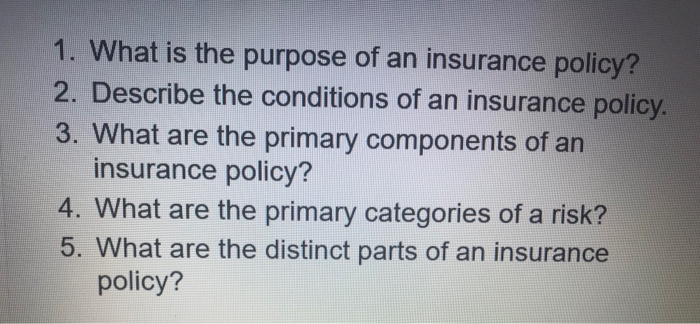The Basic Principles Of Pacific Prime
Pacific Prime for Beginners
Table of ContentsMore About Pacific PrimeThe 9-Second Trick For Pacific PrimeThe 2-Minute Rule for Pacific PrimePacific Prime Fundamentals ExplainedThe Greatest Guide To Pacific Prime

This is because the information were collected for a period of strong economic performance. Of the approximated 42 million people that were without insurance, just about about 420,000 (regarding 1 percent) were under 65 years old, the age at which most Americans end up being qualified for Medicare; 32 million were adults in between ages 18 and 65, around 19 percent of all adults in this age; and 10 million were children under 18 years of age, regarding 13.9 percent of all children (Mills, 2000).
These price quotes of the variety of persons without insurance are produced from the yearly March Supplement to the Present Population Survey (CPS), carried out by the Demographics Bureau. Unless or else kept in mind, nationwide price quotes of people without health and wellness insurance coverage and percentages of the populace with various kinds of protection are based on the CPS, the most widely utilized resource of quotes of insurance policy protection and uninsurance prices.
The Best Guide To Pacific Prime

Still, the CPS is especially useful since it creates yearly quotes fairly promptly, reporting the previous year's insurance policy protection approximates each September, and due to the fact that it is the basis for a regular collection of quotes for greater than twenty years, enabling analysis of patterns in protection with time. For these reasons, in addition to the considerable usage of the CPS in various other studies of insurance protection that are provided in this record, we rely upon CPS estimates, with limitations noted.

The estimate of the variety of uninsured people broadens when a population's insurance coverage status is tracked for several years. Over a three-year duration starting early in 1993, 72 million individuals, 29 percent of the united state population, were without coverage for a minimum of one month. Within a single year (1994 ), 53 million individuals experienced at least a month Learn More without protection (Bennefield, 1998a)
Six out of every ten without insurance adults are themselves utilized. Working does enhance the possibility that one and one's household participants will certainly have insurance, it is not a guarantee. Also members of households with two full-time breadwinner have nearly a one-in-ten possibility of being uninsured (9.1 percent uninsured rate) (Hoffman and Pohl, 2000).
Indicators on Pacific Prime You Need To Know
New immigrants represent a considerable percentage of people without health insurance. One analysis has associated a substantial section of the current growth in the size of the U.S. without insurance populace to immigrants who showed up in the nation between 1994 and 1998 (Camarota and Edwards, 2000). Recent immigrants (those that came to the United States within the previous four years) do have a high price of being uninsured (46 percent), but they and their youngsters make up just 6 percent of those without insurance nationally (Holahan et al., 2001).
The connection in between medical insurance and accessibility to care is well developed, as documented later in this phase. The connection between health insurance coverage and health and wellness results is neither straight nor basic, a considerable clinical and wellness solutions study literary works web links wellness insurance coverage to improved accessibility to care, much better quality, and improved personal and populace wellness condition.
Degrees of analysis for checking out the impacts of uninsurance. It focuses especially on those without any type of health insurance for any type of length of time.
Examine This Report about Pacific Prime
The troubles faced by the underinsured remain in some areas comparable to those encountered by the without insurance, although they are generally much less extreme. international health insurance. Uninsurance and underinsurance, however, include clearly various plan issues, and the strategies for resolving them might vary. Throughout this research and the 5 records to comply with, the major emphasis gets on individuals without any medical insurance and hence no aid in spending for healthcare past what is available via charity and safeguard institutions
Medical insurance is an effective aspect impacting invoice of treatment due to the fact that both patients and doctors reply to the out-of-pocket cost of solutions - https://pacificpr1me.edublogs.org/2024/04/02/pacific-prime-your-one-stop-shop-for-insurance-solutions/. Wellness insurance, however, is neither required neither enough to access to clinical solutions. However, the independent and direct effect of medical insurance protection on accessibility to wellness services is well developed.
Others will certainly get the healthcare they require also without health and wellness insurance coverage, by paying for it expense or seeking it from service providers that use care complimentary or at very subsidized prices. For still others, medical insurance alone does not make certain receipt of treatment as a result of other nonfinancial barriers, such as a lack of healthcare companies in their area, restricted accessibility to transportation, illiteracy, or linguistic and social differences.
Pacific Prime - The Facts
Official study about without insurance populaces in the USA dates to the late 1920s and very early 1930s when the Committee on the Price of Medical Treatment created a collection of records regarding financing doctor workplace gos to and hospitalizations. This concern became salient as the numbers of medically indigent climbed up throughout the Great Depression.